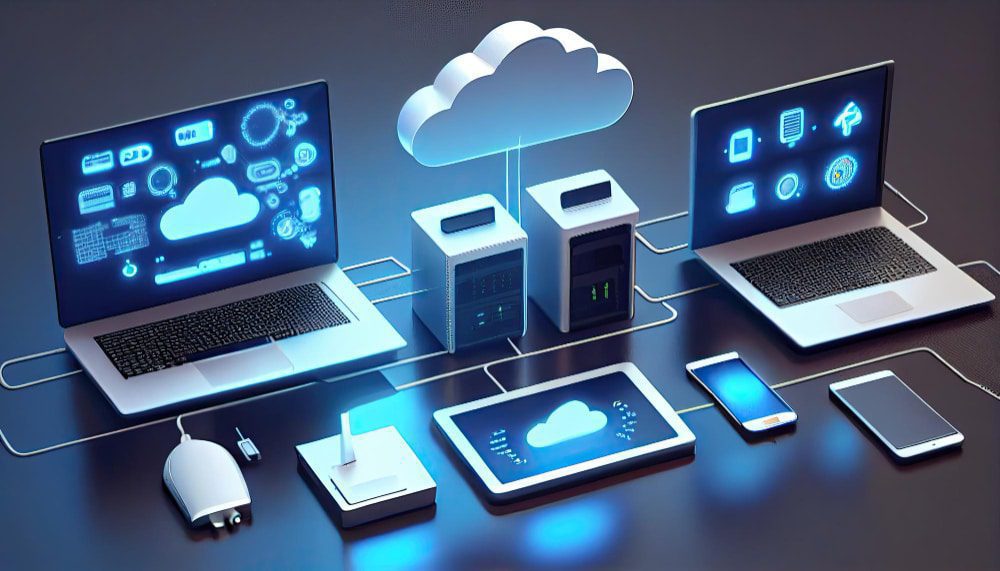In the fast-paced and ever-evolving world of the restaurant industry, staying ahead of the game is crucial for success. A restaurant’s Point of Sale (POS) system is important for its operations and customer experience. Top restaurants know that the POS system is more than just a transaction tool. They have discovered secrets from their POS systems that help them be more efficient, profitable, and satisfy customers. In this article, we will reveal these secrets from top-notch POS restaurant systems and show you how they can revolutionize your establishment in this competitive industry.
The Importance of POS Systems in Restaurants
In the fast-paced world of restaurants, efficiency is key. That’s where POS (Point of Sale) systems come in. These tools make ordering and paying easier for restaurant owners and have other benefits. From inventory management to data analysis, these systems provide invaluable insights that can help optimize operations and boost profits.

One of the main advantages of a POS system in restaurants is accurate order management. A good POS system sends orders quickly from the table to the kitchen or bar, so food and drinks are prepared on time and mistakes are minimized. This leads to faster service and improved customer satisfaction – two factors that can make or break a restaurant’s reputation.
Tracking ingredient usage in real-time helps restaurant operators control stock levels and prevent waste. Detailed reports from the POS system empower managers to make data-driven decisions about popular and profitable menu items. Investing in an advanced POS system improves all aspects of restaurant operations, leading to efficiency, accuracy, and success.
Restaurant POS System Streamlining Operations: Efficiency and Cost Savings
Implementing a high-quality POS system in your restaurant has many advantages. It helps make operations more efficient and saves money. By automating tasks like taking orders, communicating with the kitchen, and managing inventory, you can avoid mistakes and delays that come with manual processes.
By analyzing popular and unpopular dishes, you can make smart decisions to attract more customers and save money. A simple POS system helps staff focus on customer service instead of administrative tasks. With online ordering and table management, waitstaff can spend less time taking orders and reservations. They can focus on creating great dining experiences, which makes customers happier and more likely to come back.
Enhancing Customer Experience: Personalization and Convenience
One of the most effective ways to enhance customer experience in restaurants is through personalization and convenience. By tailoring the dining experience to meet individual preferences, restaurants can create a sense of connection that keeps customers coming back for more. With advances in technology, top-notch POS restaurant systems now have the capability to gather data on customer preferences and behavior. This data can then be used to customize menus, suggest personalized recommendations, and even remember previous orders.

In addition to personalization, convenience plays a crucial role in enhancing customer experience. Today’s consumers value efficiency and ease when it comes to dining out. Restaurants can use technology to make ordering easier. They can offer online reservation systems or mobile apps that let customers order in advance. By reducing wait times and simplifying payment methods, restaurants can provide a more seamless and convenient dining experience.
Overall, focusing on personalization and convenience through innovative POS restaurant systems can greatly enhance the customer experience. Restaurants can use data and technology to create personalized experiences that go beyond what customers expect. Custom menus and easy ordering make sure every visit is memorable and keeps customers coming back, which helps the restaurant make more money.
Data Management: Tracking Sales and Inventory
Data management plays a vital role in tracking sales and inventory in the restaurant industry. With the help of top-notch POS systems, businesses can easily monitor their daily sales and keep an accurate record of their inventory. This allows owners and managers to make informed decisions regarding menu planning, purchasing, and pricing strategies.
One of the key benefits of effective data management is real-time analytics. By constantly updating sales data, restaurants can identify which items are selling well and which ones are not performing as expected. This information helps them adjust their menu offerings accordingly and capitalize on customer preferences while minimizing waste.
Furthermore, with detailed inventory tracking capabilities, restaurants can ensure they always have sufficient stock on hand without overordering. A robust data management system gives them insights into item popularity trends, allowing for better demand forecasting and optimizing resource allocation. Ultimately, this leads to improved customer satisfaction through faster service delivery and reduced instances of out-of-stock items.
In conclusion, implementing a top-notch POS system for data management provides valuable insights that enhance decision-making processes related to sales tracking and inventory management in the restaurant industry.
Integration with Third-Party Platforms: Online Ordering and Delivery Services
Integrating with third-party platforms is becoming increasingly crucial for restaurants to stay competitive in the digital age. Online ordering and delivery services have exploded in popularity, giving customers the convenience of enjoying their favorite meals from the comfort of their own homes. By integrating their POS systems with these platforms, restaurants can streamline operations, improve efficiency, and increase customer satisfaction.
One key benefit of integration is the ability to seamlessly manage menu items and inventory across multiple platforms. With a centralized POS system, restaurant owners can easily update menus, add new items, or remove out-of-stock products. This ensures that customers always have accurate information about what’s available for order and reduces the risk of disappointment due to item unavailability.
Another advantage of integration is the improved order accuracy and speed. When orders flow directly from online platforms into the POS system, there’s less room for human error during manual entry. Restaurant staff can focus on preparing orders instead of wasting time transcribing information from various sources. By expediting order processing times, restaurants can deliver meals faster and provide a better overall experience for customers.
In conclusion, restaurants can benefit from integrating with third-party online ordering and delivery services. This helps them stay ahead in the digital world. It ensures accurate menus and real-time inventory management. It also improves efficiency by reducing errors and speeding up order processing. Embracing these integrations helps top-notch POS systems provide better service and meet customers’ demand for convenient dining at home.
Security and Fraud Prevention: Protecting Your Business
With the rise of advanced technology in the restaurant industry, security and fraud prevention have become critical aspects of protecting your business. One of the most important steps any restaurant owner can take is to invest in a top-notch point-of-sale (POS) system. These systems not only streamline operations but also provide robust security features to protect against fraud and breaches.

An effective POS system should include encryption capabilities, ensuring that sensitive data such as customer payment information is securely transmitted. Additionally, it should offer secure logins and user permissions, allowing you to control access levels based on job roles within your establishment. By implementing these features, you can significantly reduce the risk of internal theft and help safeguard your business assets.
Another key aspect of security and fraud prevention is monitoring transactions for suspicious activity. Advanced POS systems have built-in reporting tools that allow you to track sales trends and identify anomalies quickly. Check for unusual patterns or excessive voided transactions that may indicate fraud by employees or customers. Stay alert and use modern technology to protect your business from security breaches and maintain trust with stakeholders and customers.
Conclusion: Investing in a Top-Notch Restaurant POS System
Running a restaurant or any food business requires a good POS system. Investing in a high-quality POS system can improve customer service, streamline operations, and increase profits. One advantage of a good POS system is that it can easily connect with other business tools and software. This includes accounting software, inventory management systems, and online ordering platforms. This saves time by automatically syncing data and provides valuable insights into the business.
Good POS systems have analytics and reporting tools. These tools help businesses track sales trends, popular menu items, employee performance, and customer behavior. These insights help restaurants make data-driven decisions regarding menu offerings, pricing strategies, staffing levels, and overall business strategies. By understanding customer preferences and adapting accordingly, restaurants can enhance guest satisfaction and ultimately drive revenue growth.
Overall, investing in a top-notch POS system is an essential step for any restaurant looking to thrive in today’s competitive landscape. It not only improves operational efficiency but also provides valuable data insights that enable smart decision-making for long-term success. With the right system in place, restaurants can deliver exceptional service while maximizing profitability—a winning formula that sets them apart from the competition.


